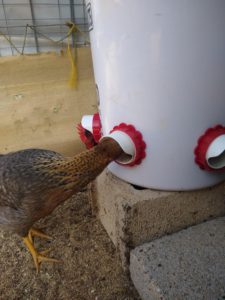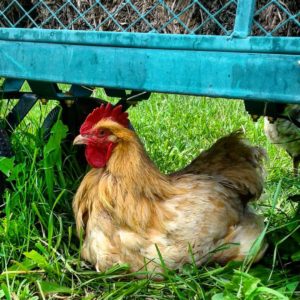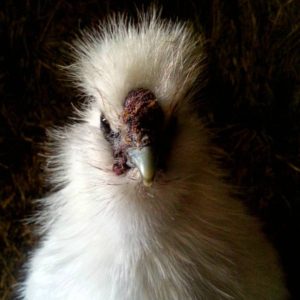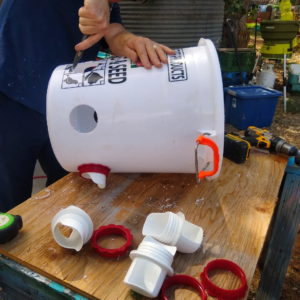Keeping chickens takes work but I have a few tips to help make it easier and more enjoyable. Here are 3 items I purchased that helped buy back my time and make caring for chickens easier.
When we moved onto a small farmstead in a rural community it was a decision made with intention. After spending 4 years traveling around the country in the RV, we learned a lot about the broken food system, and the desire to live where we might grow some of our food was born.
Remembering my Grandmother’s small farm in Pennsylvania, complete with chicken coop, made me think farming was in my blood. Granted, I had never lived there or done farm work but the love of the lifestyle was etched deeper in my soul every time we visited.
It felt natural to buy a few chickens as our first farm animals. They’re easy, right? I found an ad placed by a local person who had 2 Silkie hens listed for sale. Clark and I drove over on afternoon and the guy made us an offer we couldn’t refuse. Since these were his last 2 hens he would throw in the garbage can full of chicken feed, a waterer, and a feeder. I think we paid him $30. A small price for all the eggs we would get one day.
On the way home one of those hens crowed.
If you weren’t aware, only roosters crow.
Not to be deterred I told Clark it was fine. Having a rooster meant we would soon have baby chickens and basically get a whole flock of chickens for the price of two!
A few days later, the other hen started crowing.
We’ve learned a lot since then. Although I will say farm animals and farm life teach you something new almost daily. Over the years we certainly learned some lessons that have shaped how we care for our backyard chickens today. We’ve implemented a few things to make it easier on us and better for them.
Oh, and I now have 15 (genuine) hens and 2 roosters. We average about 8 eggs per day from about February through October.
Let’s get into those time-saving items we use to make caring for chickens easier.
No Waste Chicken Feeder

After years of trying to make that good ol’ galvanized feeder work for us, I was frustrated by the amount of wasted food. Chickens are messy. They tend to send their food flying to the four corners of the earth. They also poop everywhere, including in their food and water. Most of the classic chicken feeders are open to the elements. That means rainwater and critters can easily get inside.
I’ve seen a lot of fancy, schmancy feeders at the local Ag store. Some had levers that opened the feeder when a chicken stood on it just right but were so flimsy the brand-new display model didn’t operate correctly. Some looked like rocket ships but were made of cheap plastic which tends to disintegrate in our intense sun. Most were shockingly expensive and held just a few pounds of feed (meaning I would still have to have a separate mouse-proof, waterproof storage container).
Then I found this DIY No Waste Chicken Feeder Kit.
For less than $20 you get everything you need (less the container itself) to easily turn a bucket, box, bin, or garbage can into an automatic chicken feeder. We used the food storage container used for storing the chicken feed to make our feeder. The beauty of it is the container holds an entire 50-pound bag of chicken food. That means I fill it up once every month or two. No extra bin is needed to store the leftover opened bag. And if you have a lot of hens you can use a larger container that can hold multiple bags of feed saving you time.
Lil Cluckers Automatic Chicken Waterer
Along those same lines, I found these little cups that turn a bucket, tote bin, or plastic garbage can into an automatic chicken waterer. Now, I hope you understand that you should always be certain your chosen containers are food-safe. After all, we don’t want sick chickens and we don’t want to eat eggs that might be contaminated with bad stuff. We used a 5-gallon food-grade bucket and installed a Gamma Lid so we could unscrew the lid for fast fill-ups and easy clean-outs.
The little drinking cups work like little floats and self-fill. This means there’s only a small amount of water in each cup that can get dirty or pooped on. I have my bucket sitting on a cinder block so it’s easy for the chickens to reach and keeps them from kicking sand and shavings in it.
I usually only have to fill the bucket once a week but I check it every day, of course. Big time saver for sure. The only downside is that we can’t use it in the Colorado winter.
Automatic Chicken Doors
We invested in automatic chicken doors several years ago after my ankle surgeon told us they changed his life. I balked at first thinking they were far too expensive and frivolous. Of course, my surgeon had one…he’s a surgeon. He probably has a yacht and Range Rover, too. They must have gone on sale because I finally broke down and got one and guess what??? He was right. They are life-changing.
I’ve since gotten a second one for our turkeys. This year I bought a third one from a different manufacturer called Run-Chicken to try out (it was a much better price point).
I love them all.
They all rely on solar for recharging the battery. They can all be set up to open and close when the light is right (open at dawn and close at dusk) or can be programmed to open and close at a specific time. They can also be manually opened and closed.
All of my poultry learned how the door works within days. Albert, our Tom turkey, is the only one who ever misses the door closing. Once in a blue moon, I find him locked out. I just open the door and let him in then close it back up. Honestly, I think his partner, Mileva, sometimes gets irritated with him and doesn’t let him come to bed by blocking the doorway. Poor guy.
The doors are predator-proof and have been very reliable for us.
Conclusion
So, those are 3 of my top suggestions to make caring for chickens a little easier. I’m finding I would like to spend more time interacting with my chicken and turkey friends and less time hauling water and cleaning poop out of feed trays. I’m certain we waste less feed and have gained some peace of mind knowing that if I happen to be away from home at dusk they will be safe inside the coop behind a predator-proof door.
No matter what conveniences we find and use I can’t overstate this part. Don’t rely 100% on any of these kinds of devices. It’s one thing to be out late with friends and relying on an automatic door to close on time but if you don’t bother checking you won’t know if there’s been a malfunction (like a dead battery). Same with automatic food and water devices. They will run out. Even automatic waterers hooked up to water lines and hoses can fail. It doesn’t take long for chickens to die of dehydration or heat stroke. Let these tools help you, not replace you.
This post may contain affiliate links. As an Amazon associate, I might earn a commission on qualified purchases at no additional cost to you.







Leave A Reply